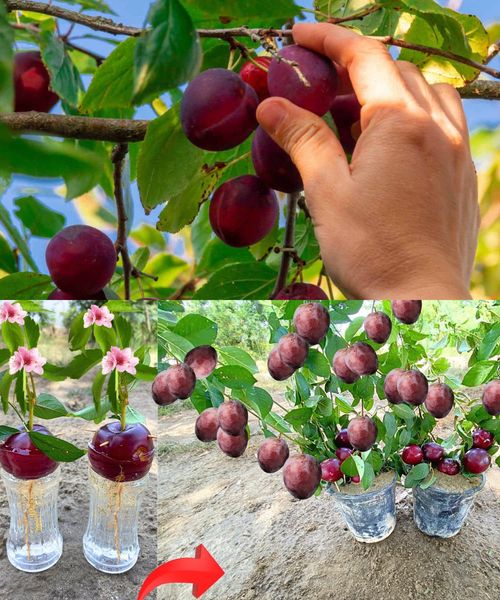Introduction: Growing plums organically offers the satisfaction of nurturing your own fruit while promoting environmental sustainability. This guide provides easy-to-follow steps for cultivating plums without the use of synthetic chemicals, from selecting the right plum variety to harvesting sweet, juicy fruit.
- Choose the Right Plum Variety: Begin by selecting a plum variety that is well-suited to your climate and soil conditions. Popular organic plum varieties include Santa Rosa, Methley, Satsuma, and Shiro. Research local nurseries or consult with experienced growers to determine the best options for your area.
- Selecting a Planting Site: Plums thrive in well-drained soil with full sun exposure. Choose a site that receives at least 6-8 hours of sunlight per day and is sheltered from strong winds. Avoid low-lying areas where cold air may accumulate, as plums are susceptible to frost damage.
- Preparing the Soil: Prepare the planting site by loosening the soil to a depth of 12-18 inches. Incorporate organic matter such as compost or aged manure to improve soil fertility and structure. Avoid using synthetic fertilizers or pesticides, as these can disrupt the natural balance of the soil ecosystem.
- Planting the Plum Tree: Dig a hole that is twice as wide and just as deep as the root ball of the plum tree. Place the tree in the hole, ensuring that the graft union is above the soil level. Backfill the hole with soil, gently firming it around the roots. Water the tree thoroughly after planting to settle the soil and promote root establishment.
- Pruning and Training: Pruning is essential for shaping the plum tree and promoting fruit production. Begin by removing any damaged, diseased, or crossing branches. Encourage an open center by pruning away competing branches and maintaining a central leader. Training the tree to a modified central leader or open-vase shape can help maximize sunlight penetration and airflow.
- Watering and Mulching: Water newly planted plum trees deeply and regularly, especially during dry periods. Provide enough water to keep the soil consistently moist but not waterlogged. Apply a layer of organic mulch, such as wood chips or straw, around the base of the tree to retain moisture, suppress weeds, and regulate soil temperature.
- Pest and Disease Management: Organic pest and disease management focus on prevention and natural remedies. Encourage biodiversity by planting companion plants that attract beneficial insects and repel pests. Monitor the tree regularly for signs of pests or diseases, such as aphids, plum curculio, or brown rot, and take appropriate action, such as handpicking insects or applying organic sprays.
- Harvesting and Enjoying: Plums are typically ready to harvest in late summer to early fall, depending on the variety. Harvest fruit when it is fully ripe but still firm, with vibrant color and a slight give when gently squeezed. Be careful when harvesting to avoid bruising the fruit, and store plums in the refrigerator for up to a week or enjoy them fresh from the tree.
Conclusion: Growing plums organically is a rewarding endeavor that yields delicious fruit while minimizing environmental impact. By following these simple steps for planting and caring for plum trees without synthetic chemicals, you can enjoy a bountiful harvest of sweet, juicy plums straight from your own backyard.
